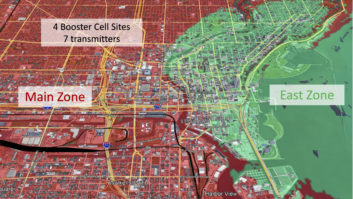The author is membership program director of the National Federation of Community Broadcasters. NFCB commentaries are featured regularly at www.radioworld.com.
Community radio stations have so much to handle on a daily basis. There are volunteer training sessions. There are local underwriters and their needs. Then there’s the broadcast, which needs to be lively 168 hours each week. Oh, let’s not forget the technology needs, from headphones to transmitters. Every manager’s notepad, it seems, is filled with tasks.
And do not forget the unexpected weirdness that can only be community radio. Buy me a drink sometime and I will tell you about the time I had to corral a baby opossum out of a studio with one of those cheap plastic mail bins (sorry, U.S. Postal Service). Community radio has lots of those kinds of tales!
[Read: Community Broadcaster: Rocket Fuel]
So, with all the big and small to-dos in our faces, it is easier to forget more stuff than you realize. However, next week’s Emergency Alert System national test should be on your calendar. With plenty of reminders, because this test is required and impacts every radio station, whether commercial or noncommercial.
On Wednesday, Aug. 7, the Federal Emergency Management Agency and the Federal Communications Commission will be jointly conducting a nationwide test of the Emergency Alert System. Should there be a last-minute rescheduling of the EAS signal going out to everyone, the secondary test date is set for Wednesday, Aug. 21.
This directive includes your community radio station, as well as religious broadcasters, commercial radio and, well, everyone.
In addition, both full- and low-power radio stations are required to participate. Following reported issues last national test for low-power FM stations, the FCC has sought to walk station through its processes. In July, the commission ’s Public Safety and Homeland Security Bureau hosted a webinar for LPFMs, featuring an overview of the EAS and instructions on how to register and file all appropriate documentation.
Indeed, there is a fair bit of documentation for community radio stations to complete. All stations had to file Form One by early July, but the deadline was extended due to technical issues. If your station has yet to file Form One, you should do so as soon as possible. You can check your form status by logging in to ETRS, the EAS Test Reporting System set up for stations to share their compliance with this effort.
If your station has lost its password — and, let’s face it, who hasn’t lost a password from time to time, right? — you can request a password reset here. New accounts, if your station has never had one, which includes a handful of broadcast outlets, can get an account set up here.
Form One is not a station’s only obligation. Form Two is a day-of form to be completed on test day. On or before Sept. 23, radio station staff members must file the detailed post-test data sought by Form Three. Given you may already be in EAS form completion mode now, your station may wish to start compiling this data while it is fresh and file Form Three early if possible.
Emergency preparedness services are one of the most evident and critical ways a community radio station can serve its listeners and broadcast area. In addition, a community radio station’s ability to fill this need beyond what a commercial broadcaster does may help it make a much more compelling case for its local work.
The national Emergency Alert System test is a requirement for all radio stations. Everyone involved in a station should be ready to go on Aug. 7. However, you may also see this day as one to help lift up all your operations.
[Subscribe to our newsletter and get it delivered right to your inbox.]











